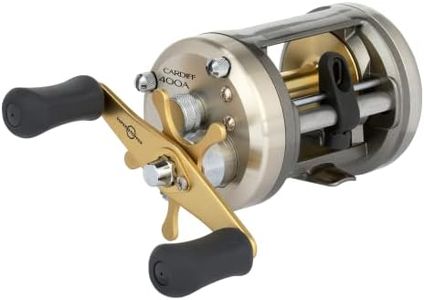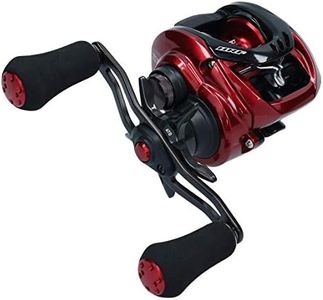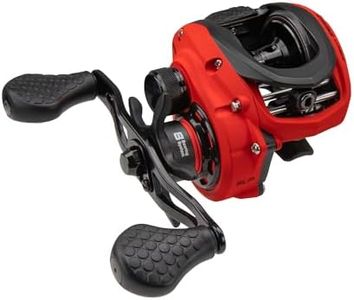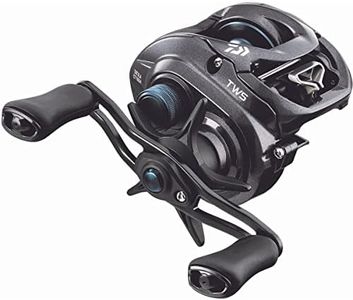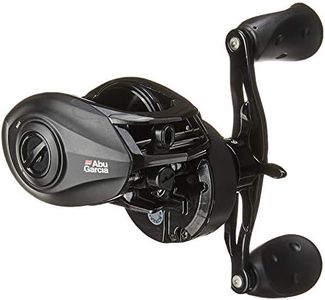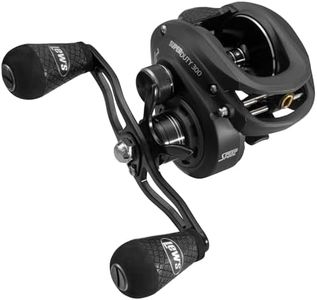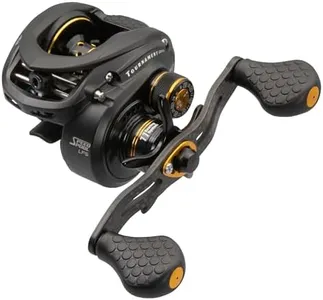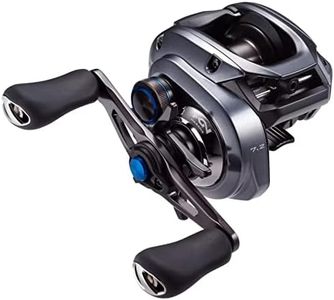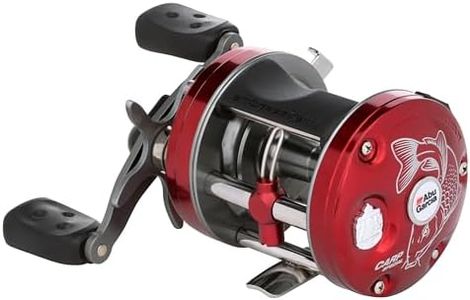We Use CookiesWe use cookies to enhance the security, performance,
functionality and for analytical and promotional activities. By continuing to browse this site you
are agreeing to our privacy policy
10 Best Baitcast Reels
From leading brands and best sellers available on the web.Buying Guide for the Best Baitcast Reels
Selecting the right baitcast reel can make fishing not only more enjoyable but also more efficient. Baitcast reels are a favorite for many anglers due to their precision and control, especially when using heavier lures or targeting bigger fish. To make the most out of your purchase, it's crucial to understand the key specifications that define baitcast reels and how they align with your preferred fishing style, experience level, and typical fishing environments. By focusing on what you’ll be using the reel for, you can pick one that suits your needs and helps you get the best performance on the water.Gear RatioGear ratio in a baitcast reel refers to how many times the spool rotates for each turn of the handle. This is important because it determines how quickly you can retrieve your line. Lower gear ratios (like 5.1:1) retrieve slower, offering more torque for reeling in larger fish or using bigger lures. Mid-range ratios (around 6.4:1) provide versatility for various techniques, while higher gear ratios (7.1:1 and above) are best for quick retrieves, ideal for lures that require speed. Your choice should reflect your primary fishing style—a slower ratio for big fish or power techniques, and a higher ratio for fast presentations or covering water quickly.
Braking SystemThe braking system helps manage the rotation speed of the spool and reduces the chances of backlash (line tangling). There are two primary types: magnetic and centrifugal brakes. Magnetic brakes are easier to adjust and good for beginners, while centrifugal brakes offer fine-tuned control, which more experienced users may prefer. Decide based on your comfort and experience level; if you’re new to baitcasting, look for a system that’s simple to adjust.
Line CapacityLine capacity indicates how much fishing line the reel can hold, displayed as a length of line at a certain pound-test strength (for example, 120 yards of 12-pound line). This is important based on the fish you target and the environment in which you fish—more line is generally better for longer casts and fighting bigger fish, while smaller capacities keep the reel lighter for finesse fishing. Choose greater capacity if you fish for larger species or in open water, and less if you focus on smaller fish in tight spots.
Frame MaterialThe material of the reel’s frame affects its durability and weight. Common materials include graphite (lightweight but less strong) and aluminium (stronger and more rigid but heavier). A lightweight frame is easier to handle for long fishing sessions, while a stronger material provides enduring strength for bigger catches or rougher use. Pick a frame that balances your preference for comfort with your need for toughness.
Ball BearingsBall bearings inside the reel contribute to how smoothly it operates. More bearings generally improve smoothness, but quality matters more than quantity. Reels labeled with corrosion-resistant or sealed bearings offer longer life, especially in wet or saltwater conditions. If you plan on frequent use or fishing in tougher environments, opt for reels with smooth, protected bearings for a better feel and longevity.
Drag SystemThe drag system allows you to control the amount of force a fish needs to pull line from the reel. A smooth, easily adjustable drag is critical for fighting fish without breaking the line. Drag strength is measured in pounds, and a higher max drag is suited for bigger, stronger fish. For average freshwater fishing, a moderate drag system suffices, while serious anglers targeting hard-fighting species should look for higher-quality, strong drags.
Spool SizeSpool size refers to both the depth and width and influences how much line the reel can hold and the ease of casting different weights of lures. A deeper or wider spool gives more line capacity and is better for heavier lines and longer casts. Shallower spools are lighter and suited to finesse techniques or lighter line. Consider your typical lure weights and the duration of your casts to find an appropriate spool size.
